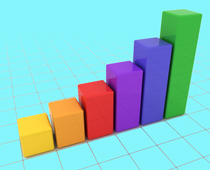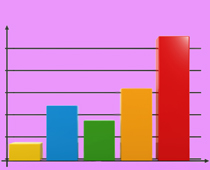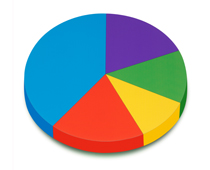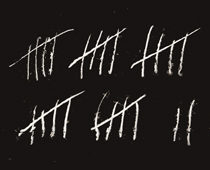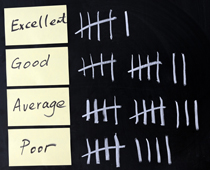
Ask the AI Tutor
Need help with Year 2 Data Handling - Interpreting Data? Ask our AI Tutor!
AI Tutor - Lucy
Connecting with Tutor...
Please wait while we establish connection

Data Handling is all about using data and results.
Year 2 Data Handling - Interpreting Data
Learn to read charts and pictograms. Estimate first, then count carefully to check. Spot totals, the biggest group, and the difference between categories.
To see a larger image, click on the picture.
Question 1
Sam measured himself every month for a year and wrote his results in a table.
What would you expect to see?
What would you expect to see?
Sam's start height was more than his height at the end of the year
Sam stayed the same height all year
Sam's height changed by over 2m
Sam's start height was shorter than his height a year later
Most children grow at least a few centimetres each year
Question 2
Question 3
Question 4
Question 5
Question 6
Zak wants to ask his friends about their favourite TV programmes. How could he organise the information?
He could send them all a letter
He should just try to remember everyone's answers
He could write a story about it
In a table so he can tally
The table could have a space for the child's name, and a list of five or six programmes to choose from
Question 7
Sam is struggling to read his bar chart. He has labelled the numbers at the side, but what else should he have done?
Label each bar along the bottom
Coloured them in neatly
Made all the bars bigger to see them clearly
Turned the graph upside down
Labelling the information on a graph is really helpful for anyone trying to understand it
Question 9
**Unlimited Quizzes Await You! 🚀**
Hey there, quiz champ! 🌟 You've already tackled today's free questions.
Ready for more?
Ready for more?
🔓 Unlock UNLIMITED Quizzes and challenge yourself every day. But that's
not all...
not all...
🔥 As a Subscriber you can join our thrilling "Daily Streak" against other
quizzers. Try to win a coveted spot on our Hall of Fame Page.
quizzers. Try to win a coveted spot on our Hall of Fame Page.
Don't miss out! Join us now and keep the fun rolling. 🎉
**Unlimited Quizzes Await You! 🚀**
Hey there, quiz champ! 🌟 You've already tackled today's free questions. Ready for more?
🔓 Unlock UNLIMITED Quizzes and challenge yourself every day. But that's not all...
🔥 As a Subscriber you can join our thrilling "Daily Streak" against other quizzers. Try to win a coveted spot on our Hall of Fame Page.
Don't miss out! Join us now and keep the fun rolling. 🎉





